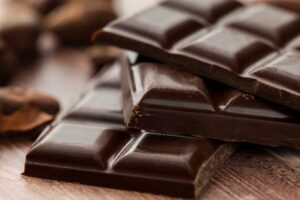The Lowdown on Morning Wood
Ever wondered why you wake up with morning wood ready to salute the day? Those morning surprises aren’t just about your sexual health; they’re a sneak peek into your overall wellbeing. It’s like your body’s own way of saying, “All systems go!” Morning erections happen during REM sleep when your body is buzzing with activity—heart pumping, blood flowing. And no, they aren’t always about those steamy dreams. This is your body’s built-in check for healthy penile tissue by promoting oxygen flow. So, it’s not just amusing—it’s crucial!
What Morning Wood Tells Us About Our Health
Consistent morning wood can be a thumbs up for your cardiovascular health and testosterone levels. Think of it as your personal health meter. A morning salute suggests things are ticking just fine, with good blood flow and hormones in check. On the flip side, if the flag doesn’t rise as often, it might be a hint to check on your heart or sugar levels, as these could be messing with your vascular health and nerve functions.
Young Guys and Those Pesky Testosterone Levels
It’s not just the older gents who need to worry about their hormone levels. Young dudes shouldn’t be seeing numbers that mimic grandpa’s testosterone scores. If you’re under 40 and pulling testosterone digits in the 200s or 300s, it’s a red flag. This could be down to modern menaces like insulin resistance, which knocks your energy, metabolism, and hormone production off balance. Keeping an eye on this can help you stay energized and healthier longer.
Lifestyle Checks and Balances
Our daily choices play a starring role in the drama that is morning erections. Stress, mental health, and physical wellbeing are all part of the script. High stress can turn your hormonal balance into a horror show, while a healthy heart and active lifestyle can keep the episodes sunny and regular. Beware of the villains, though—environmental toxins can sneak in and disrupt your hormonal harmony. Steering clear of these bad actors and choosing cleaner living can really help keep your mornings cheerful.
Simple Ways to Keep the Show on the Road
If you want to keep those morning greetings regular, think about how you live from day to day. Throw some exercise into your routine to get your blood and hormones pumping, eat clean to keep your internals gleaming, and make sure you’re catching enough z’s to let your body do its nightly maintenance. And don’t forget to unwind and decompress. A little meditation or yoga might just make your mornings a bit more predictable.
Wrapping It Up
So, while your morning wood might be a source of chuckles or blushes, it’s also a handy, health-checking tool built right into your body. Regular morning appearances are good news and a sign that you’re as fit as a fiddle. But if things are looking a bit quiet on the rise-and-shine front, it might be time to tune up your lifestyle or chat with a doc. Keep an eye on the barometer, and enjoy the chuckles—it’s all part of the great health adventure!
References:
- Dean, Robert C, and Tom F Lue. “Physiology of penile erection and pathophysiology of erectile dysfunction.” The Urologic clinics of North America vol. 32,4 (2005): 379-95, v. doi:10.1016/j.ucl.2005.08.007
- Salonia, Andrea et al. “Is erectile dysfunction a reliable indicator of general health status in men?.” Arab journal of urology vol. 11,3 (2013): 203-11. doi:10.1016/j.aju.2013.07.008
- Ide, Hisamitsu. “The impact of testosterone in men’s health.” Endocrine journal vol. 70,7 (2023): 655-662. doi:10.1507/endocrj.EJ22-0604
- Zhu, Alex et al. “What Is a Normal Testosterone Level for Young Men? Rethinking the 300 ng/dL Cutoff for Testosterone Deficiency in Men 20-44 Years Old.” The Journal of urology vol. 208,6 (2022): 1295-1302. doi:10.1097/JU.0000000000002928
- Dandona, P, and M T Rosenberg. “A practical guide to male hypogonadism in the primary care setting.” International journal of clinical practice vol. 64,6 (2010): 682-96. doi:10.1111/j.1742-1241.2010.02355.x
- Ranabir, Salam, and K Reetu. “Stress and hormones.” Indian journal of endocrinology and metabolism vol. 15,1 (2011): 18-22. doi:10.4103/2230-8210.77573
- Nystoriak, Matthew A, and Aruni Bhatnagar. “Cardiovascular Effects and Benefits of Exercise.” Frontiers in cardiovascular medicine vol. 5 135. 28 Sep. 2018, doi:10.3389/fcvm.2018.00135
- Piazza, Mauri José, and Almir Antônio Urbanetz. “Environmental toxins and the impact of other endocrine disrupting chemicals in women’s reproductive health.” JBRA assisted reproduction vol. 23,2 154-164. 30 Apr. 2019, doi:10.5935/1518-0557.20190016








